From Catwalk to Cart: Global Ecommerce Insights For Fashion Retailers




TABLE OF CONTENTS

LETTER FROM THE EDITOR
\ What we’ve learned from BigCommerce retailers in 2022
FASHION AND APPAREL ECOMMERCE TRENDS
\ How evolving consumer expectations are impacting fashion retailers
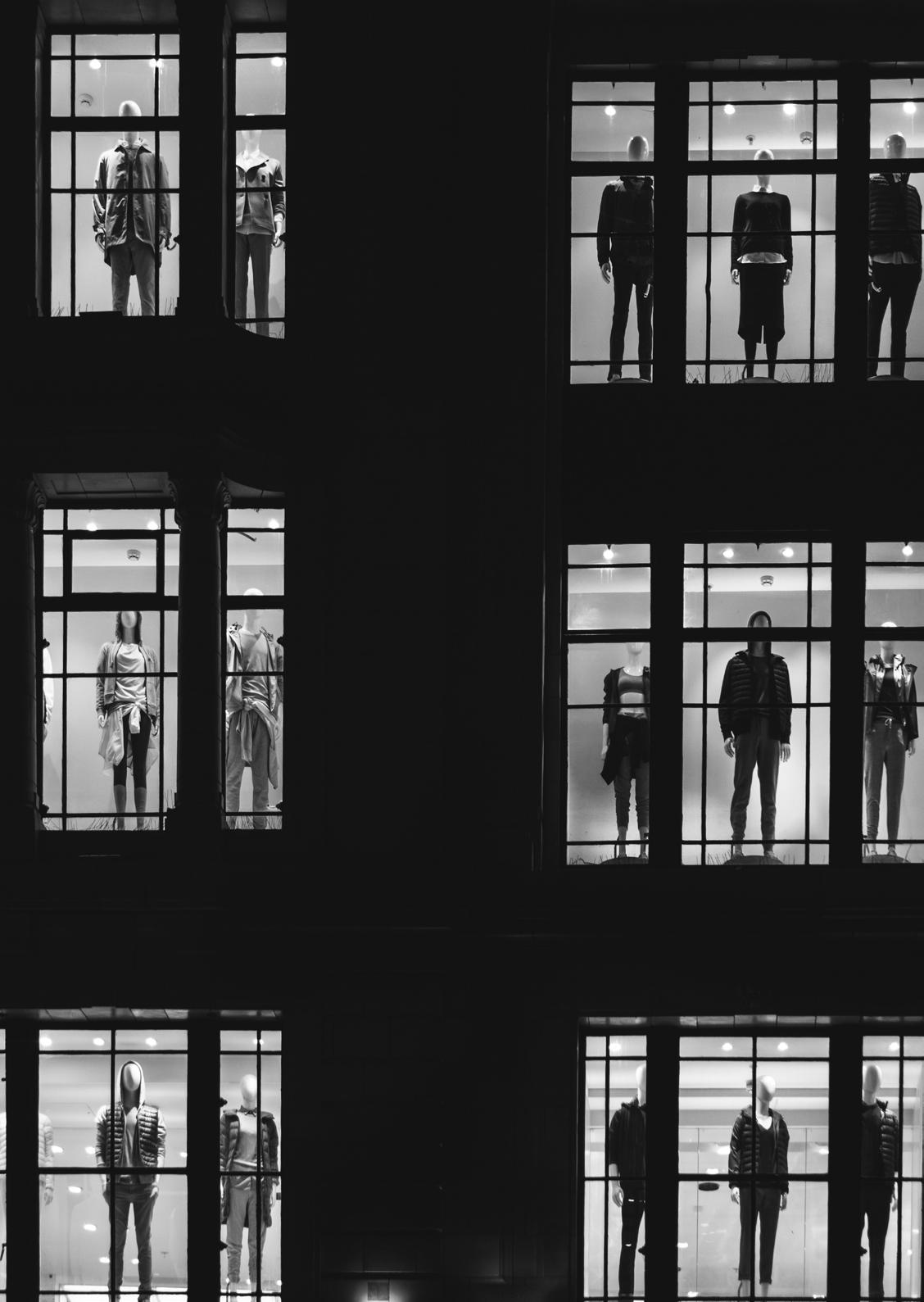
THE FUTURE OF FASHION ECOMMERCE IS NOW
\ New technologies transforming shopping behaviors
ECOMMERCE SUCCESS STORIES
\ Real-world examples from leading fashion and apparel brands
THE FINAL WORD
\ Get ready for a new era of fashion ecommerce

PAGE
GLOBAL ECOMMERCE INSIGHTS FOR FASHION RETAILERS
LETTER FROM THE EDITOR

WHAT WE’VE LEARNED FROM BIGCOMMERCE RETAILERS IN 2022
Written by Melissa Dixon, Director, Content Marketing, BigCommerce
As a leading enterprise ecommerce platform, BigCommerce has had a front-row seat witnessing how shifting consumer behaviors have impacted the fashion industry — and the entire commerce landscape. Between an ever-evolving pandemic, supply chain struggles, inflation and a host of technological advancements, retailers have shown incredible resilience, facing the unique challenges of the last several years with grace and style.
Looking back at January through September of 2022, BigCommerce fashion and apparel merchants across the globe saw a 2% increase in gross merchandise volume (GMV) compared to January through September of 2021. By the same measure, fashion AOV increased by 9% YoY, although the total number of orders only increased by 1%.
Notably, fashion merchants in North, Central and South America (AMER) have outpaced overall fashion ecommerce with a 6% increase in GMV and an 11% increase in AOV YoY. But despite their overall growth, AMER fashion retailers also experienced a 5% decrease in number of orders YoY.
However, fashion retail in the Asia-Pacific region (APAC) did not perform at the same level. Between 2021 and 2022, APAC fashion saw a 3% decrease in GMV, a 2% decrease in total number of orders and a 1% decrease in AOV. Even more drastically, fashion merchants in Europe, the Middle East and Africa (EMEA) experienced an 18% decrease in GMV and a 22% decrease in total number of orders.


Regardless of the fluctuating market trends and macroeconomics, one thing remains certain: it’s imperative that fashion retailers continue to attract shoppers and retain their customers. With this in mind, we surveyed our BigCommerce fashion merchants to gain perspective and combined it with our proprietary data to provide readers with proven strategies and actionable recommendations.
Additionally, you’ll find success stories from our very own BigCommerce fashion merchants, including Ted Baker and Badgley Mischka, as well as a Make it Big interview with Rent the Runway Co-Founder Jenny Fleiss.
As always, our goal at BigCommerce is to empower businesses with data, and our hope is that these insights will inspire ecommerce success for fashion retailers across the globe.

04
GLOBAL ECOMMERCE INSIGHTS FOR
RETAILERS
FASHION
FASHION AND APPAREL ECOMMERCE TRENDS
HOW EVOLVING CONSUMER EXPECTATIONS ARE IMPACTING FASHION RETAILERS
Written by Océane Deslandes, Sr. Content Marketing Manager EMEA, BigCommerce
It should come as no surprise that the fashion and apparel industry is regarded as a trendsetter, both on the runway and online. As we look back, here are some notable ecommerce trends shaping this dynamic industry.

In a recent survey of BigCommerce merchants, 44% of respondents prioritized enhancing the customer experience through omnichannel presence, improved customer service and shipping, while 20% pointed to omnichannel selling specifically. While omnichannel selling does involve selling across multiple channels, omnichannel marketing focuses on the customer.
As defined by Sharon Gee, VP of Revenue Growth and GM of Omnichannel at BigCommerce, “Omnichannel, holistically, has to do with, ‘How do you sell more, wherever your shoppers are?’ That means online to offline, third-party channels, wholesale, marketplace, social commerce, ads driving to D2C, in-store, pop-up shop — it means wherever you hold inventory, wherever you sell, and however you fulfill. How do you sell more everywhere in a consistent experience for the shopper?”
Perhaps two of the most critical pieces of the omnichannel puzzle are buy online, pick up in store and buy online, return in store — also known as BOPIS and BORIS. Although not a new concept,
BOPIS dramatically rose in popularity during the pandemic and has remained an attractive buying option because it provides the best of both worlds: the convenience of purchasing online and the immediacy of picking up in store. Similarly, BORIS helps reduce the hassle of making returns online, allowing customers to return items easily and quickly in-store.
“The expectations for prompt delivery and easy returns have only increased, even as the supply chain is strained and more people are shopping online. Shoppers don’t only compare prices. They’re looking at delivery speed, cost, and reliability based on customer reviews. There are many options for businesses to improve their efficiency. If you don’t find a reliable way to automate the fulfillment process and keep up with an increased order volume or consumer expectations, you’ll cede ground to competitors who can,” explains Brian Roizen, Cofounder and Chief Architect at Feedonomics.


Social commerce is another essential part of any omnichannel strategy. The evolution has been gradual but apparent to anyone who spends time on social media. The friction in buying and selling through channels like Instagram and TikTok is all but gone. Interestingly, 48% of our survey respondents cited social media or social commerce as the shopping trend or technology with the greatest impact on their overall business in 2021.
What’s next for omnichannel commerce? Retailers and consumers alike are already benefiting from the emerging live social shopping trend. If you want to streamline product discovery and purchases, look no further than Instagram, Snapchat and TikTok.
Read more about what omnichannel commerce is, why your business should adopt it and which systems, platforms and solutions you need to have in place in this Omnichannel Guide from Feedonomics
06
OMNICHANNEL IS KEY FOR A CONNECTED CUSTOMER EXPERIENCE.
01GLOBAL ECOMMERCE INSIGHTS FOR FASHION RETAILERS
A recent survey commissioned by BigCommerce of over 4,000 online shoppers in the US, UK, France, Italy and Australia found the majority of consumers rate sustainability as either very important (32%) or somewhat important (52%) when making a purchasing decision.
Sustainability is even more important for Gen Z, as only 8.5% of respondents in this group stated that they were indifferent about sustainability, whereas 27% of Baby Boomers were indifferent. Additionally, as income rises, so does the importance of sustainability. Something that luxury fashion brands and retailers must prioritize to attract these shoppers.

Although consumers want to support a brand’s sustainability efforts, they are generally unwilling to do that through increased spend. Still, consumers are willing
CONSUMERS WANT TO BUY FROM BRANDS THAT PRIORITIZE SUSTAINABILITY.
to sacrifice convenience by only having items delivered on a certain day or picking up items in store.

When comparing generations, Gen Z is meaningfully open to paying more for sustainably produced products. It may also come as no surprise that they were also the least willing to only pick up items in store, whereas Baby Boomers are much more open to having items delivered on a certain day or store pickup.
With this data in mind, today’s fashion brands will need to invest in sustainability and highlight their efforts throughout their ecommerce website and marketing in order to attract and convert shoppers, especially those in a younger demographic.

CLOSING THE SALE MEANS OFFERING MORE PAYMENT OPTIONS.
The next most common response to our survey question regarding the greatest impact on the overall business in 2021 — excluding uncategorized responses — was “offering alternative payment methods.” This includes methods such as digital wallets, buy now, pay later (BNPL) and cryptocurrency.

Significantly, 25% of survey respondents said offering flexibility in payments proved most impactful to their businesses. This makes sense considering the rise in consumers who are using alternative payment methods.
In a 2021 survey BigCommerce conducted with PayPal of consumers in the US, UK and Australia, we found that 35.2% of respondents stated that digital wallets are their preferred payment method for online purchases. That number is even higher for UKspecific consumers at 45.8%.
Additionally, in a more recent global survey, BigCommerce asked consumers which payment methods they’ve used when shopping
online, and 16% said they’ve used BNPL. Of those who have used it, the majority were in the US (36%), UK (26%) and Australia (30%). Interestingly, consumers in Italy and France were less likely to report using BNPL.
And, of course, we can’t talk about payment methods without talking about cryptocurrency. Although cryptocurrency has been around for over a decade, it’s only recently begun to explode in popularity. In fact, according to Google Trends data, cryptocurrency really started its upswing in early 2021.
When we asked consumers which payment methods they’ve used when shopping online, 5% said they’ve used cryptocurrency, and of those who have used it, the majority were in the US and Italy. And while most people aren’t yet using cryptocurrency, of those who do, a strong majority (66%) prefer it as a payment method.
The takeaway is clear: giving potential buyers more payment options yields positive results for ecommerce retail sales.
08 02
03
GLOBAL ECOMMERCE INSIGHTS FOR FASHION RETAILERS Read our Global Consumer Report: Current and Future Shopping Trends for more insight on the behavior trends that could impact your business.
THE FUTURE OF FASHION ECOMMERCE IS NOW

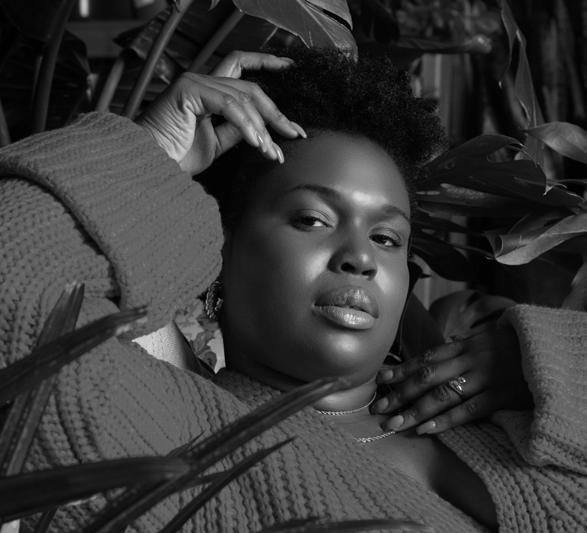
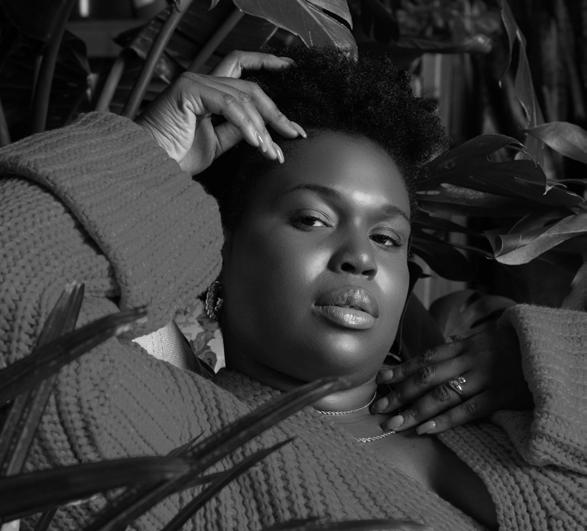

NEW TECHNOLOGIES TRANSFORMING SHOPPING BEHAVIORS
Written by Pablo Gallaga, Sr. Manager, Content Marketing, BigCommerce

FUTURE-PROOF YOUR BUSINESS WITH COMPOSABLE COMMERCE.
The solution? Composable commerce — a modular digital commerce approach that allows businesses to customize their tech stacks by choosing bestin-breed solutions to suit their unique business requirements.
The fashion industry stands to benefit most from adopting emerging technologies. The challenges of matching customers to the right product from the comfort of their own homes and offering frictionless checkout experiences are now largely met.
Some areas that are ripe for getting ahead of the curve are composable commerce, augmented reality (AR), Metaverse retail experiences and artificial intelligence (AI).
Needless to say, the last few years have brought waves of unprecedented change. Amid changing consumer behaviors and economic headwinds, enterprises must seize the opportunity to fortify their market position and secure their staying power.
While the go-to structure for many ecommerce businesses has been an all-in-one monolithic solution, these legacy technologies not only hinder your ability to deliver cutting-edge shopping experiences, but also limit what your teams can accomplish.
Pamela Reynolds, Vice President of Ecommerce for La Perla Beauty shared her perspective on why their company chose a composable approach: While a one-size-fits-all solution might be a quick fix for today’s roadblocks, a monolithic platform won’t sustain businesses in the long-term. Today’s businesses need a composable commerce solution that provides the flexibility and agility needed to respond quickly to unexpected change.
01
GLOBAL ECOMMERCE INSIGHTS FOR FASHION RETAILERS
11
Listen to our Make it Big Podcast episode to learn more about the potential of composable and headless commerce.
“WITH ONLY A SMALL, FOCUSED TEAM WE LOOKED TO THE TECHNOLOGY TO DO A GREAT DEAL OF THE HEAVY LIFTING SUCH AS THE ISSUES OF MULTIPLE LANGUAGES, LOCALIZATION AND THE ADDITION OF NEW TECHNOLOGIES, WHILST STILL BEING EASY TO USE.”
The augmented reality market is estimated to reach $78 billion by 2028. A large driver of this predicted growth is the adoption of AR by both online and brick-and-mortar retailers to improve upon the shopping experience.
Visualizing various styles and colors of a garment or accessory without actually manually swapping them out used to be the stuff of science fiction, but it will now define the ecommerce retail experience for the discerning consumer.
Similarly, being able to interact with 3D, high-definition representations of products in real-time will give shoppers confidence in pulling the trigger on purchases of products that are currently still met with hesitation. Shoppers want to examine craftsmanship and spatial attributes in person. Now they will be able to do this from their mobile devices and AR headsets.

BigCommerce interviewed augmented reality product configurator ThreeKit’s VP of Marketing and Alliances, Marc Uible, for the Make It Big Podcast to hear an expert perspective on how and why fashion merchants should adopt this trend. Uribe had this advice:
We recommend starting small and testing certain items to learn what truly engages your audience before investing too much time and resources into AR. In general, this is a great option to try new technologies you don’t have experience with yet.


Check out the full Make it Big Podcast episode with ThreeKit and Lindsey Scoggins Studio.

12
GLOBAL ECOMMERCE INSIGHTS FOR FASHION RETAILERS
“
WE ENCOURAGE PEOPLE TO START. START WITH ONE PRODUCT. EXPERIENCE IT. YOU WILL SEE AN ROI BECAUSE PEOPLE LOVE THIS EXPERIENCE...AND THEN YOU CAN EXPAND.”
The Metaverse is the virtual reality network for realtime social and retail experiences that has dominated technology news cycles for the last year. But, are you aware that the Metaverse promises to change our very existence forever by marrying our insatiable hunger for information with the ability to experience it in a tactile, immersive way?
On the shopper’s side, referring back to our consumer survey, we found that consumers were about evenly split between willing (46%) and not willing (52%) to shop in the Metaverse. We also discovered that consumers in Australia (52%) are the most willing to shop on the Metaverse, and those in France were the least willing (35%).
So while the Metaverse has the potential to transform and disrupt, it’s still extremely early in its actual development. Still, many major fashion brands are jumping on the Metaverse bandwagon like Nike or Hermes and Gucci which have already invested in non-fungible tokens (NFTs) to generate interest in the Metaverse retail future.


As research shows, personalization drives loyalty. In fact, a study from Google and Storyline Strategies found that 72% of consumers are more likely to be loyal to a brand if they offer a personalized experience.
Luckily, emerging technologies like artificial intelligence (AI) offer new opportunities to bring your product directly to the customer and create an experience tailored uniquely to them. Below are just a few AI use cases being implemented in the fashion world today:
\ Visual recognition optimization
\ Customer purchase predictions

\ Product recommendations
\ Chatbots

\ Inventory management
With consumers increasingly expecting personalized experiences, ease of use and convenience in their shopping journey, AI is key to customer satisfaction. Plus, with 20% of fashion retailers generating 144% of the industry’s profits, now is the time for companies to invest in technologies that will help them stand out from the crowd.

SOLVE CUSTOMER PAIN POINTS WITH AI.
For fashion merchants interested in using AI in 2023, check out Bloomreach’s comprehensive How-To Guide.
14
04 03
ENTER THE METAVERSE.
GLOBAL ECOMMERCE INSIGHTS FOR FASHION RETAILERS
ECOMMERCE SUCCESS STORIES
REAL-WORLD EXAMPLES FROM LEADING FASHION AND APPAREL BRANDS
Written by Shelley Kilpatrick, Manager, Content Marketing, BigCommerce
We’ve reviewed the latest ecommerce trends and discussed the technologies that will power the future of fashion customer experience — but how are fashion brands putting these into practice? Let’s take a look at these BigCommerce customers to find out.
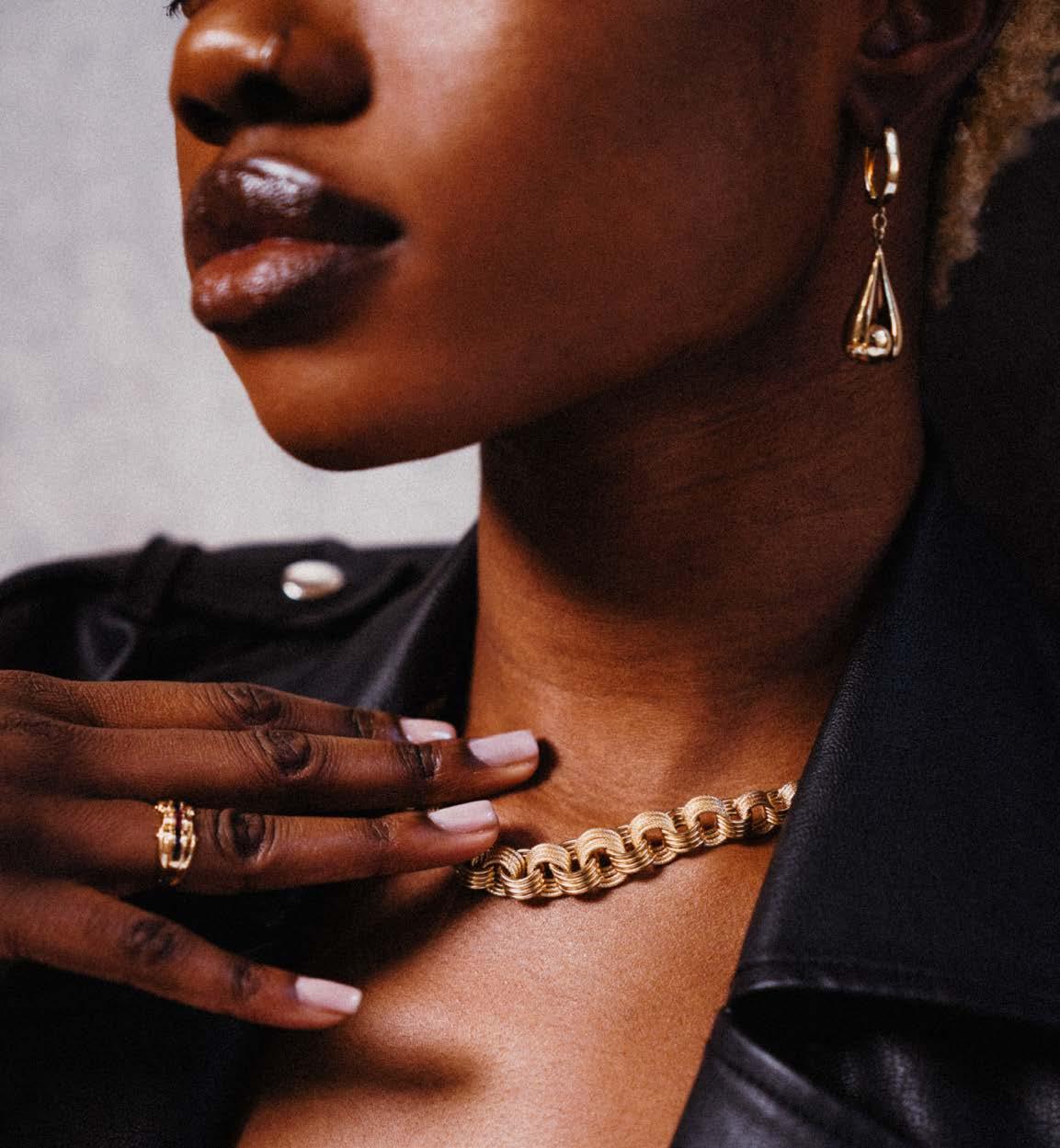
TED BAKER
LAUNCHES

MULTI-STOREFRONT FOR CUSTOMER-FIRST DIGITAL INNOVATION.
Since its launch as a menswear brand in 1987, Ted Baker has had an unswerving focus on quality and attention to detail — in both the product and the customer experience. So when they decided to expand their ecommerce footprint with no less than 12 storefronts — in 5 languages, 4 currencies, and with the ability to ship all over the world — they knew their desired level of quality and detail would require the support of an impeccable ecommerce platform and team.
Using headless commerce along with BigCommerce’s newly launched Multi-Storefront solution, the brand has elevated its digital game to deliver a modern, compelling online experience designed to drive the business through innovation and shopper satisfaction.
To get the full story, the BigCommerce team met with Ted Baker CIO, Leon Shepherd, and Head of Business Solutions, Carole Kingsbury.
BIGCOMMERCE
Of all the ecommerce platforms available, why did you select BigCommerce?
LEON SHEPHERD
BigCommerce ticked all the boxes for us: functionality, future roadmap, cybersecurity, cloud-native, API architecture, proven capability and a great vendor team that we knew we could work well with.
The open API architecture, large and growing set of preintegrated apps, multi-storefront and ongoing commitment to the principles of composable commerce enables us to quickly and easily innovate new products and services.
We can use our team’s expertise efficiently rather than requiring ever-bigger teams to do repetitive work across multiple websites.
CAROLE KINGSBURY
The open API elements were key. They gave us the ability to “plug and play” with a multitude of current and also future services. They opened up a new landscape where we can play, experiment and learn but also add value in a short space of time.
The Multi-Storefront capability was also key…having the ability to share a core set of product data but display differently by locale enables us to provide brand uniformity but with some individuality reflecting country personality or style.
BIGCOMMERCE
How does BigCommerce help enable Ted Baker to meet shopper expectations and stay ahead of the competition?

CAROLE KINGSBURY
The BigCommerce product teams are constantly evolving the platform’s core capabilities and are incredibly responsive to customer inputs and suggestions — this highly-collaborative partnership approach is hugely important to Ted Baker given this is how we operate our business across our markets.
GLOBAL ECOMMERCE INSIGHTS FOR FASHION RETAILERS 16
LA PERLA

CHOOSES THE RIGHT PARTNERS TO EXCEED CUSTOMER EXPECTATIONS.
La Perla, an Italian luxury brand of lingerie, sleepwear and swimwear, started with Ada Masotti, a talented woman who created her first atelier of corsetry in 1954. Since then, La Perla has become a global leader in the luxury fashion market, combining design and creativity to innovate throughout every decade while always adapting to its customers various shapes, tastes and needs.
So, unsurprisingly, when the brand re-launched on BigCommerce in 2020, it surrounded itself with multiple partners — such as Like Digital & Partners — to elevate the customer experience on its online stores.
The agency managed the full re-platforming using MACH technologies (Microservices, API-first, Cloud-native, and Headless) — which helped to deliver a long-term omnichannel commerce strategy across Europe, the Middle East, the US and Asia that’s mobile-first and user-focused.
“IT BECAME APPARENT VERY EARLY ON THAT THIS WAS NOT SIMPLY A CASE OF BUILDING A STAND-ALONE, MONOLITHIC ECOMMERCE SITE AND LEAVING IT THERE. RATHER, THIS IS THE FIRST STAGE OF LA PERLA BEAUTY MAKING A LONG-TERM COMMITMENT TO DIGITAL AND CREATING A COMPREHENSIVE GLOBAL OMNICHANNEL PLATFORM THAT CAN DELIVER CONSISTENT, PREMIUM DIGITAL EXPERIENCES TO CONNECT AND ENGAGE WITH CUSTOMERS.”

BADGLEY MISCHKA


STAYS ON TREND WITH THE RIGHT INTEGRATIONS.
Touted by Vogue as one of the “Top 10 American Designers,” Mark Badgley and James Mischka’s fashion journey began at Parsons School of Design in New York, where they met as students and discovered their shared aesthetic for fashion and apparel. After graduating and designing for popular brand names such as Donna Karan and WilliWear, Badgley and Mischka joined forces in 1988 to launch their now thriving American fashion label, Badgley Mischka.
Prior to launching on BigCommerce in 2018, Badgley Mischka operated on Pulse Commerce (previously GoECart). However, the fashion company found that, as an all-in-one solution, Pulse Commerce didn’t offer the functionality or agility they needed to thrive and expand. With limited merchandising capabilities, marketplaces, plugins and integrations, Pulse Commerce simply couldn’t keep pace with Badgley Mischka’s growth — so they decided it was time to make a change.
In their search for a new ecommerce solution, Badgley Mischka knew it was crucial for their platform to provide the capabilities and integrations needed to remain agile and scalable.
“I’d say that BigCommerce takes the cake and covers most of everyone’s needs,” said Katie Ouaknine, owner of Badgley Mischka Web. “There have been very few partners that we’ve reached out to that didn’t integrate with BigCommerce, so we haven’t been limited by choices — and that was a huge factor. We knew we wanted to plug in a bunch of different integrations, and BigCommerce was the way to get that done.”
One of the apps that has been most profitable for the fashion label has been Feedonomics, a full-service data feed management platform.
“Only two months in with Feedonomics, and holy cow, they are changing our lives a little bit,” said Ouaknine.
After a slow start launching on Amazon through a different feed provider, GoDataFeed, Badgley Mischka partnered with Feedonomics to help drive sales. At the advice of a BigCommerce Omnichannel Growth Manager, Badgley Mischka decided to launch a new marketplace: Google Shop.
“I was expecting similar results to our Amazon feed — a few orders a week, nothing too crazy,” said Ouaknine. “But our business absolutely exploded the second we got on Google Shop…It was way more growth than I was ever anticipating.”
The future of Badgley Mischka can be summed up in one word: growth. From increasing site personalization to refining online marketplaces to expanding globally, Badgley Mischka is doing “anything and everything we can to grab as many customers out there as possible,” says Ouaknine.
GLOBAL ECOMMERCE INSIGHTS FOR FASHION RETAILERS
19
Richard Mogendorff, CDO, Like Digital
NATORI
FOCUSES ON FRONT-END EXPERIENCE AND BRAND LOYALTY.


Josie Natori, founder and CEO of The Natori Company, literally took her business from the ground up when she began designing her own line of lingerie from her living room floor more than 40 years ago.
Her son, Ken Natori joined the family business in 2007 and worked his way up the ranks to become its president. Under his leadership the company built a booming direct-to-consumer business and ecommerce led the way.
Selling online since 2008, Ken Natori realized after eight years that they needed a platform that had more out-ofthe-box capabilities to give the company the ability to scale at will.
“The Natori ecommerce team is pretty small. So we definitely needed a platform that would make it easy for us to maintain the site in an efficient way. And
BigCommerce has definitely helped with that,” said Mariah Hager, Ecommerce and Social Media Manager at The Natori Company.
Natori’s success across channels, from wholesale and online commerce to marketplaces like Amazon and Google Shopping, all play a major role in creating connected experiences for the business and its customers.

“Having access to BigCommerce’s open APIs, its app marketplace with partners and solutions to fit almost every need, our script manager functionality, and certainly omnichannel expansion are things that make the platform a major asset to Natori’s success,” said Colin Talbot, Ecommerce and Digital Marketing Manager at the Natori Company.
Looking ahead, Natori’s focus is on building brand loyalty, keeping a close eye on the market innovation that will serve their customers:
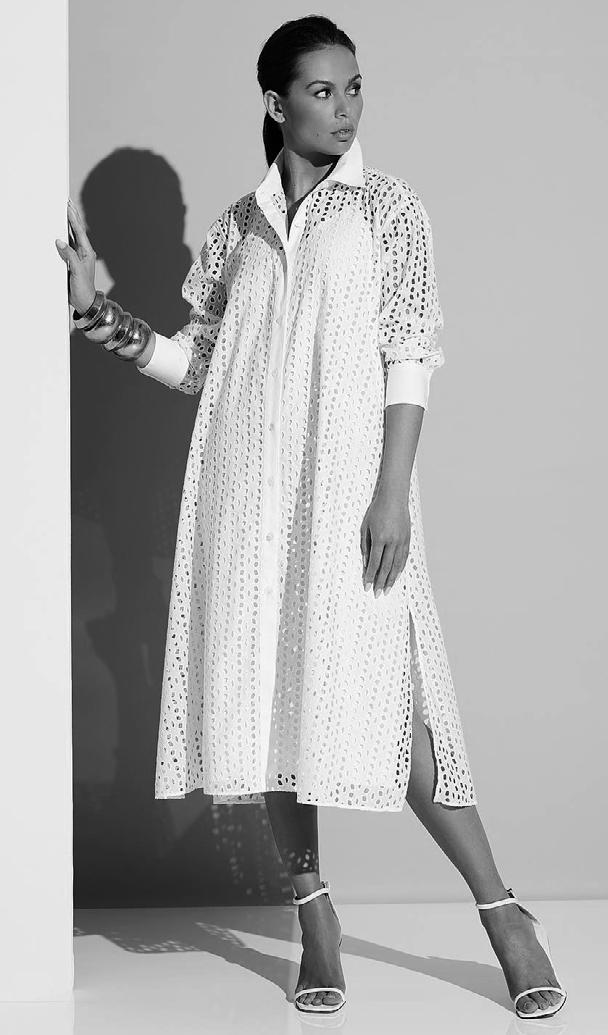
20
WE’RE ALWAYS TRYING TO INNOVATE AND DO OUR BEST TO STAY A STEP AHEAD OF THE GAME. WE’D RATHER BE SMALLER, MORE CONSISTENT AND MAKE SURE WE’RE MAINTAINING BRAND LOYALTY
“ Read the full story.
RATHER THAN BEING A BIGGER COMPANY JUST FOR THE SAKE OF GROWTH AND TO BE BIGGER.”
Ken Natori, President at The Natori
Company
GLOBAL ECOMMERCE INSIGHTS FOR FASHION RETAILERS
AN INTERVIEW WITH RENT THE RUNWAY CO-FOUNDER JENNY

 FLEISS
FLEISS
Now that we’re emerging from the pandemic and approaching a “new normal” of hybrid in-store and online shopping, what trends are you seeing in the retail industry today?
MEGHAN STABLER
JENNY FLEISS
It’s a very exciting time, because when you have huge shifts which the pandemic created, but also now this moment of recessionary time, there are a lot more things that consumers reconsider, a lot of behaviors that they naturally tweak or are open to readjusting, and there’s also a lot more that businesses do to think about how to save costs or reframe their business policies. That can lead to a lot of opportunities for startups.
MEGHAN STABLER
How do you embed sustainability into ecommerce, which is fast-moving and customers want their order delivered quickly?
JENNY FLEISS
At Rent the Runway, we were always very excited about the fact that clothing rental in itself is a very sustainable process. You can share a unit of clothing rather than fast fashion, where you’re constantly creating and buying new items. The average U.S. consumer is buying over 70 items a year — which is mind-blowing — and often consumers are only wearing them once or twice. That is not a sustainable answer.
The very exciting thing that happened is, first off, how much it has started to matter for our consumer base. When we started the company, we would ask our customers, “What do you like most about Rent the Runway?” And they would say, “It’s fast. It’s easy. It lets me play around with fashion. It’s affordable. I look great.” Sustainability was very low ranking on what they brought up. Today, it’s always within the top three whenever anyone mentions Rent the Runway and what they like about it.
Some of the shift, and I think what’s most powerful, is when you can actually build a community that really embraces sustainability as a core piece of a business. That’s helped drive a lot of momentum in how ecommerce companies have then started to lean in much further to how they can be sustainable.
Now, we find ourselves in a moment post-pandemic, where a lot of normal behaviors have been shaken up and consumers are open-minded to being re-trained on certain aspects, such as, “When do I go in store versus buy online?” or, “What new products might I try?” or, “What should be the frequency of how much I rent my clothing because I haven’t bought fancy dresses probably in three years? Should I rent more of that?” It’s a really exciting moment for brands like ours to take advantage of that moment and lean in further to a consumer base.
MEGHAN STABLER
What do you need to do as a brand to stand out above the competition?
JENNY FLEISS
The biggest thing is to have a diversification of your marketing channels. You definitely can’t rely too heavily on digital marketing. You also need a social media strategy. You also need a PR and brand strategy. You need a word-of-mouth strategy — actually think that is the most powerful and often under-leveraged piece of building authentic brand relationships. I like thinking of that word-of-mouth lever as a really natural, super powerful and sticky way of spreading a trusted brand relationship that you want to try.
It’s also very helpful to double down on a specific region and geography, because some of what I’m talking about — brand awareness, press and word-of-mouth — can be really hard to track. What you can see if you do test in a couple of cities is the incremental lift over time in a given city where you really amplify the focus of those marketing efforts.

22
GLOBAL ECOMMERCE INSIGHTS FOR FASHION RETAILERS
With an extensive repertoire in the retail and ecommerce industries, Rent the Runway Co-Founder Jenny Fleiss shared her expert insights into emerging digital trends in this Make It Big Conference interview with BigCommerce SVP of Global Product Marketing, Meghan Stabler. From sustainability to experiential commerce, Fleiss and Stabler cover the latest in retail and digital trends.
When it comes to forming an omnichannel strategy, how does a merchant decide what channels work best for their business? Is there a methodology or approach?

MEGHAN STABLER



 JENNY FLEISS
JENNY FLEISS
Omnichannel is critical. It’s an opportunity to enhance the overall consumer experience by giving you more optionality and touchpoints. We’ve now seen through the pandemic that it’s almost impossible not to have an omnichannel strategy. Think of the businesses that only had physical retail and how they really suffered — and how many of them were able to quickly pivot, rearrange, refocus and build out their digital presence. I think that reinforces the idea that we need to have flexible solutions if we want to be sustainable businesses.
The way we did it at Rent the Runway and how I’ve seen other businesses successfully experiment with physical stores comes back to learning from a consumer, creating those opportunities to hear from your consumer.
At Rent the Runway, the example was “Why don’t customers rent more?” Customers’ answers were, “I want to see the dress in person,” “I want to feel it,” “I’m concerned about fit,” “I’m getting this delivered the day before my event,” “I want to know that it fits me with confidence.” We heard that enough that, even though our business model was built on being a digital-only ecommerce business, we said, “Let’s test it.” That was part two: finding ways to do these MVP (minimum viable product) tests and to never stop that in your business. It’s the obvious thing from the get-go when you’re launching your business and you’re iterating and pivoting — but you need to continue to learn with your customer.

GLOBAL ECOMMERCE INSIGHTS FOR FASHION RETAILERS 24
Watch Make It Big 2022 on demand now
THE FINAL WORD

GET READY FOR A NEW ERA OF FASHION ECOMMERCE
 Written by Haylee Reed, Content Marketing Writer, BigCommerce
Written by Haylee Reed, Content Marketing Writer, BigCommerce


Clearly, the fashion industry knows how to stay on trend both on the runway and online. Based on our BigCommerce data and merchant sentiment, we can confidently say that fashion and apparel merchants are taking well to the trends that are sweeping ecommerce retail.
Omnichannel selling and alternative payment methods remain definitive focal points for the fashion industry, while user experience and sustainability are paramount among consumer needs for 2022. Looking ahead, we see composable commerce, artificial intelligence, augmented reality and Metaverse retail experiences looming as the next opportunities for merchants looking to rise above the competition.
Meghan Stabler, BigCommerce SVP of Global Product Marketing, echoes the importance of staying ahead of the curve with ecommerce technology:
TO REALLY STAND OUT FROM THE CROWD AND STAY RELEVANT MEANS STAYING ON TOP OF THE LATEST CAPABILITIES AND REMAINING AGILE. FRANKLY, THE NEW TRENDS
— AR, ARTIFICIAL INTELLIGENCE — WILL EVENTUALLY BECOME THE OLD TRENDS AS MORE RETAILERS ADOPT THEM TO ATTRACT AND CONVERT SHOPPERS WHERE THEY ARE.”
Of course, time will tell which trends remain relevant and which ones fall through the cracks — but if our the data reveals anything, it’s that ecommerce is no longer what it used to be. But by remaining agile, fashion and apparel retailers are uniquely positioned to capitalize on anything thrown their way.
GLOBAL ECOMMERCE INSIGHTS FOR FASHION RETAILERS
“
FASHION
a demo to discuss your business with our experts. 27
MODERN ECOMMERCE IS ALWAYS IN
Request




BIGCOMMERCE.COM


































 FLEISS
FLEISS



 JENNY FLEISS
JENNY FLEISS

 Written by Haylee Reed, Content Marketing Writer, BigCommerce
Written by Haylee Reed, Content Marketing Writer, BigCommerce




